Tiger Widows: Life in The Sundarbans
The Sundarbans forest lies south of Bangladesh, and is the largest mangrove forest in the world. The Sundarbans is home to about 500 tigers, and about 50 to 60 thousand people. It is one of the largest single populations of the Royal Bengal tigers in one area.
Photographer Allison Joyce has documented the region and their daily lives since 2010 and will be returning later this year.
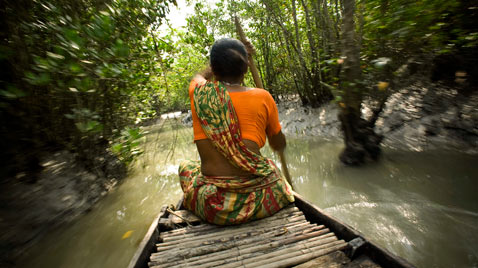
Because of rising sea levels and shrinking forest, humans and tigers are fighting for space. The farmers are forced into the forest to hunt for honey, fish, or collect crabs, putting them at risk for a tiger attack. According to the forestry officials and the wildlife trust of Bangladesh, there are an estimated there are an estimated 60-80 people killed every year by tiger attacks. So far this year 12 people have been killed by tigers, roughly twice as many as by this time in 2011.

Nafeesa Begum sits inside her home in Sunderbans, Bangladesh. In almost every village there is a man or woman commonly referred to as a " Tiger Widow". The men usually marry within a few months, but the women do not. As most women are wed when they are still children they have virtually no skills outside the home and end up living a life of poverty.
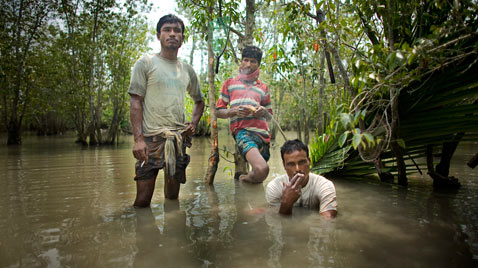
Khalil Gazi (left) and his relatives collect crabs in the jungle just 10 months after his wife Nasima was killed by a tiger. Two months after Nasima's death, Khalil sought employment away from his village. Illness forced him to move back to his village and he had to rely on his parents to pay 35,000 taka (324usd) for his medical treatment. He is worried about the tigers but feels that he has no other option. Although working as a laborer was safer, he earns more money now.
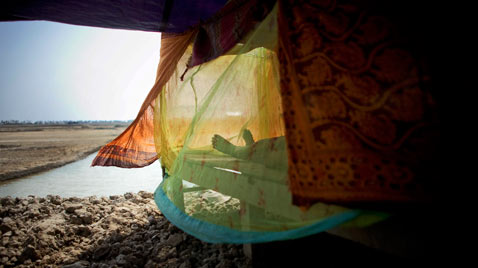
The body of Muhammad Alu is laid out before buriel. Muhammad was brutally killed by a tiger in the jungle where he was hunting for honey.
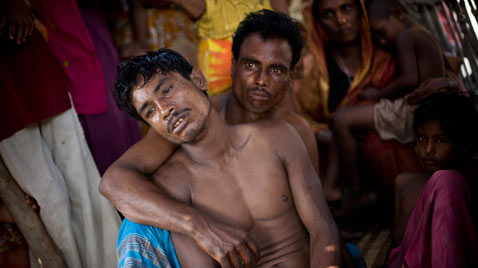
Khalil is seen at the funeral for his wife, Nasima Akhter, in the Sunderbans May 2010. In the morning, after finishing all her household work, Nasima and Khalil went crab fishing in the forest. While they were fishing on the banks of the forest a tiger snuck up from behind and pounced on Nasima. As she lay dying on the river shore she hugged Khalil made him promise never to come to the forest again. She whispered to him, "What will happen to our children if a tiger attacks you?" Khalil planned to move, leaving his home and move to the northeastern region of Bandarban at the end of this month.
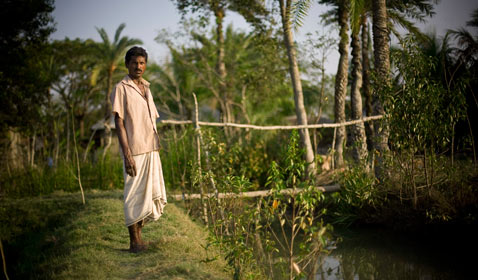
Jungle Kumar Vungi, 41, lives in Milgung. His wife, Brinde Bai, was killed by a tiger a year and a half ago. "After her death I became weaker. I never stop thinking about her. I remember over and over again that she died before my eyes. I have not gone into the jungle since her death. Now I work in town as a laborer. It brings me less money but I make enough to support my family. I remarried 7 months after her death and my new wife is too shy to work. I will never go into the jungle again. I miss her.".
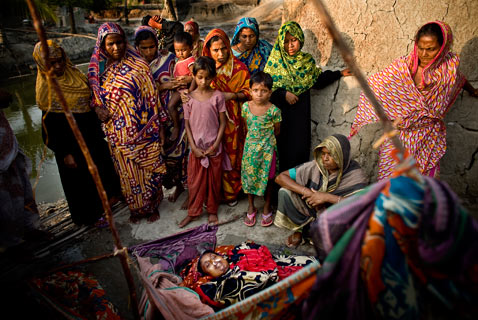
The funeral for Nasima Akhter is seen in the Sunderbans May 2010. In the morning, after finishing all her household work, Nasima and her husband Khalil went crab fishing in the forest. As she lay dying on the river shore she hugged Khalil made him promise never to come to the forest again. He returned months later out of desperation.
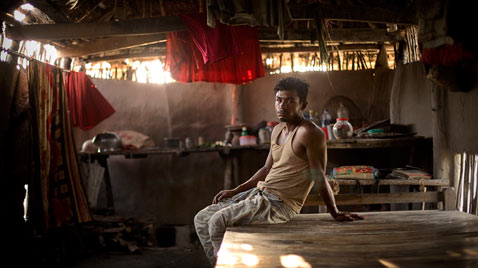
Khalil Gazi is photographed in his home 10 months after his wife Nasima was killed by a tiger. "I often think of Nasima when I am in the jungle and am sad when I remember how I had to carry her dead body out of the jungle.
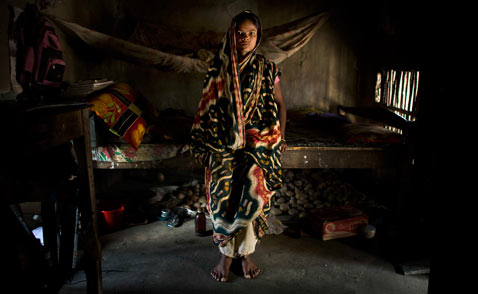
Ali Moti is photographed in her home in Moturapur. She doesn't know how old she is, but guesses she is 25. Her husband, Nabo Kumar Mandol, was killed by a tiger last year while he was fishing in the Purakalla canal. "I was 15 when my mother and father told me I was going to be married. I had a good marriage and a good life. I don't miss my husband; I can survive by myself and take care of my son and daughter. Things are okay but sometimes I have to borrow money. Things are not good, but okay."
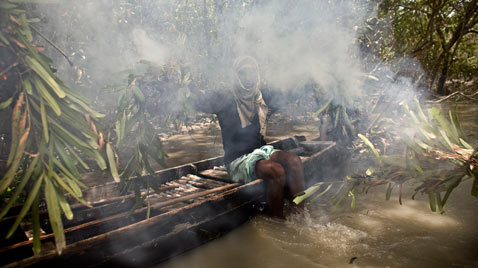
Men light a smoke emitting torch to ward off bees as they hunt for honey in the Sunderbans. Honey hunting is one of the most high-risk jobs in Bangaldesh. Every year 15-20 honey hunters are attacked and killed by tigers. The hunters can the earn the same amount in eight weeks as they would normally make in six months.

Rabia Begum, 30, lives in Kalinchy. Her husband, Anarul Shana, was killed by a tiger two years ago. "I was married at 13 years of age; My first month of marriage was very unhappy but after a month or so, I changed my mind; I came to love him with all my heart and was very happy. I am still grieving for my husband. Now I have to work and am struggling so much; I have very little hope for the future.".
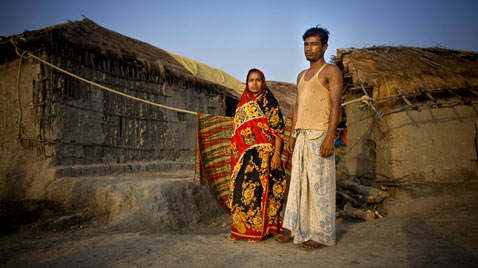
Khalil Gazi, 31, and his wife Rena Begum, 21, are photographed outside his home in Jotinronaghor 10 months after his previous wife Nasima was killed by a tiger. "The first time I entered the jungle after Nasima's death I was terrified and it took 4 to 5 months for me to feel normal in the jungle again."

Shorifa Begum, 40, lives in Gabura. Her husband Kaiser Mali was killed by a tiger in 2010 and she is struggling to survive by carrying on the work that her husband used to do, fishing and collecting crabs. Married at age 13 and now the mother of seven children, Shorifa says, "Before he died, things were nice. Now they are uncertain. Sometimes there aren't enough fish or crabs. Sometimes I don't even make one taka."..
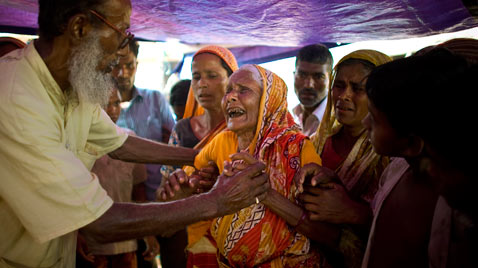
Muhammad Alu's mother cried at his funeral. Muhammad was killed by a tiger in the jungle where he was hunting for honey, he leaves behind four sons and his wife, Rashida Begum.
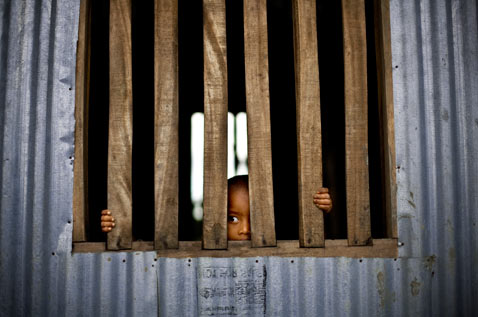
Humans and Tigers are now fighting for space.. All Images By Allison Joyce Photography